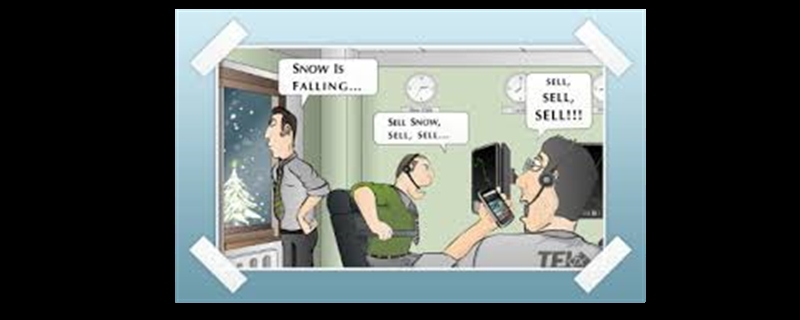Mirza Baig / Perfil
- Informações
|
11+ anos
experiência
|
0
produtos
|
0
versão demo
|
|
0
trabalhos
|
0
sinais
|
0
assinantes
|
::: You must expect to be stung by bees when in search of honey :::
::: He who is not courageous enough to take risks will accomplish nothing in life :::
::: He who is not courageous enough to take risks will accomplish nothing in life :::
Amigos
300
Pedidos
Enviados
Mirza Baig

Mirza Baig
Comentário ao tópico Press review
Dollar remains lower vs. rivals on profit taking Investing.com - The dollar remained broadly lower against the other major currencies on Tuesday, as investors locked in profits after unexpectedly
Mirza Baig

Sergey Golubev
Comentário ao tópico Press review
Natural Gas (adapted from forexminute.com article ) Natural gas which has been receiving a lot of takers in the last nine days fell a little today on the New York Mercantile Exchange. Thus, snapping
Mirza Baig

Sergey Golubev
Comentário ao tópico NZDUSD Technical Analysis 01.12 - 08.12 : Weekly Ranging Bearish
Ranging breakout is already started on H4 timeframe (see image below). Why ranging? Because price is inside Ichimoku cloud/kumo MetaTrader Trading Platform Screenshots NZDUSD, H4, 2013.12.03
Mirza Baig

Sergey Golubev
Comentário ao tópico GBPUSD Technical Analysis 01.12 - 08.12: Ranging Bullish
Forum Press review Shunmas , 2013.12.03 11:06 Forex -GBP/USD near 27-month highs after U.K Data Investing.com - The pound rose against the dollar on Tuesday, to trade near 27-month highs after data
Mirza Baig

Mirza Baig
Comentário ao tópico Press review
Forex -GBP/USD near 27-month highs after U.K Data Investing.com - The pound rose against the dollar on Tuesday, to trade near 27-month highs after data showed that activity in the U.K. construction
Mirza Baig

Sergey Golubev
Comentário ao tópico Press review
The Importance of Strength and Weakness (adapted from dailyfx article ) Trends develop from deviations in strength and weakness… if the Euro is stronger than the US Dollar over a period of time

Mirza Baig

Mirza Baig
Comentário ao tópico Press review
Forex -AUD/USD edges lower on RBA comments Investing.com - The Australian dollar edged lower against its U.S. counterpart on Tuesday, as comments by Reserve Bank of Australia Governor Glenn Stevens
Mirza Baig

Mirza Baig
Comentário ao tópico Press review
Forex - Dollar near six-month highs vs. weaker yen Investing.com - The dollar was trading close to six month highs against the yen on Tuesday after unexpectedly strong U.S. manufacturing data
Mirza Baig

Mirza Baig
Comentário ao tópico Press review
USD/JPY breaks above 103.25 barrier FXstreet.com (Bali) - With the ease that only a strong bullish momentum can deliver, such as in the Yen crosses at present, USD/JPY has bursts through 103.25
Mirza Baig

Mirza Baig
Comentário ao tópico Press review
EUR/USD likely see stronger selling interest after 1.3550/60 loss FXstreet.com (Bali) - The EUR/USD saw a convincing bearish move on Monday, likely to spur further selling interest as the close
Mirza Baig

Mirza Baig
Comentário ao tópico Press review
Shunmas : GBP/JPY trading 168.50 FXstreet.com (London) - GBP/JPY has maintained higher ground while the pound has been bid following another strong manufacturing PMI report. GBP/JPY has extended
Mirza Baig

Mirza Baig
Comentário ao tópico Press review
GBP/JPY trading 168.50 FXstreet.com (London) - GBP/JPY has maintained higher ground while the pound has been bid following another strong manufacturing PMI report. GBP/JPY has extended gains along
Mirza Baig

Mirza Baig
Comentário ao tópico Press review
Reserve Bank of Australia keeps cash rate at 2.5%, concerned over AUD Investing.com - The Reserve Bank of Australia kept its cash rate steady at a record low 2.5% on Tuesday in its November review as
Mirza Baig

Mirza Baig
Comentário ao tópico Press review
Gold prices weaken slightly in Asia on prospects for Fed tapering Investing.com - Gold prices eased slightly in Asia Tuesday on firming expectations for the Federal Reserve to begin scaling back
Mirza Baig

Sergey Golubev
Comentário ao tópico How to unsubscribe a signal ?
From this thread : Frequently Asked Questions about the Signals service Can I unsubscribe from the Signal in the same way I subscribed to it? You can cancel the Signal subscription in My Subscriptions
Mirza Baig
compartilhou este artigo do autor Ruslan Lunev
Estratégia de Carry Trade estatístico 

Um algorítimo de proteção estatística de posições swap positivas abertas de movimentos de preço indesejados. Este artigo apresenta uma variante da estratégia de proteção Carry Trade, que permite que você compense potenciais riscos em relação ao movimento de preços na direção oposta à posição aberta.
Mirza Baig
compartilhou o código do autor Arduz
Índice do dólar USDX
USDX é um índice que mede o valor do dólar contra uma carteira de seis moedas básicas.
:

